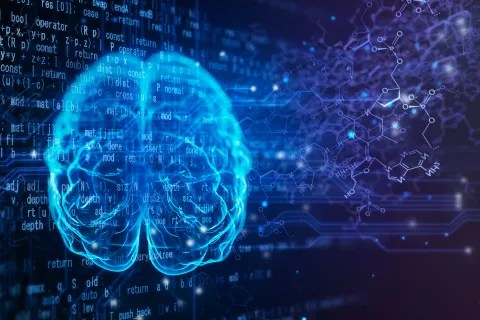A mysterious burst of energy that happens in the brain as we die could be the soul leaving the body, according to an expert.
Dr Stuart Hameroff, an anaesthesiologist, pointed to a study that captured the brain activity of clinically dead patients.
He explained how researchers placed small sensors on the brains of seven chronically ill patients minutes before they were taken off life support.
This, he said, allowed them to capture activity after each patient’s blood pressure and heart dropped to zero.
“So that could be the near-death experience, or it could be the soul leaving the body, perhaps”, the University of Arizona, US, professor, told Project Unity Podcast during an interview on Tuesday.
The burst of energy, called gamma synchrony, is linked to conscious thought and perception – the kind of activity that happens when you’re thinking or processing information.
It sometimes lasts “30 to 90 seconds” before vanishing, despite the patient being clinically dead, the expert said.
Researchers of the study, published over a decade ago, said the most possible explanation would be that the bursts were released when the brain was deprived of oxygen.
But Dr Stuart suggests it could be consciousness – in other words, an awareness of your inner and outer existence, leaving the body.
He believes consciousness requires little energy and exists on a “deeper level,” making it “the last thing to go.”
“The point is it shows that consciousness is actually, probably, a very low energy process,” he said.
The expert credits Dr Lakhmir Chawla, an intensive care unit physician at Veterans Affairs Medical Center in San Diego, US, for pioneering this research which involves monitoring dying people’s brains.
“This has been a fairly reproducible event, not 100 per cent like 50 per cent of patients show this when you measure it,” he said.
He also cited research by Dr Robin Carhart-Harris, where volunteers given psilocybin, a psychedelic compound found in mushrooms, reported vivid hallucinations.
“I think they were expecting the MRI to light up like a pinball machine,” the expert said.
But the MRI was “cold and dark as if they were comatose” and showed no brain activity.
“They were at a loss to explain this,” he added.
Dr Stuart believes this could mean our consciousness operates on a much deeper, almost microscopic, or, as he calls it, the “quantum” level.
He says this might explain the sudden bursts of brain activity that occur just before death.
The “quantum brain” idea suggests that some brain functions happen at an extremely small, subatomic scale inside our brain cells, beyond the usual electrical signals we are familiar with.
Scientists are investigating whether the brain uses quantum mechanics, meaning our thoughts and awareness could come from tiny energy waves shared between neurons.
‘The idea that ‘something’ happens at the time of death is comforting’
The study the doctor was referring to was conducted in 2009 by scientists from George Washington University.
It set out to see the level of consciousness at the end of life in critically ill patients.
The patients included two males and five females, ranging in age from 34 to 74.
The US team conducted an electroencephalogram (ECG), test that measures the electrical activity of the brain, on each of the patients as they were set to be taken off life support.
After the patients’ EEG became isoelectric, or flatlined, the patient was pronounced dead, and the device was removed.
The raw data captured the moment of death which was then followed by a spike of energy lasting from one to 20 minutes.
The experts proposed two possible explanations for what they saw in the EEG data.
The first was electrical interference could have affected the sensors.
However, since the activity was observed on two monitoring devices that used different methods to transcribe the brain activity, interference seemed unlikely.
The other theory was that the burst of activity was actually when the brain ran out of oxygen.
“As the brain reaches a critical level of hypoxia, the [an electrical signal that travels down a neuron] is lost by large numbers of neurons, and this loss of electrical potential causes a cascade of electrical activity,” they shared in the study.
Researchers speculated that this is why patients who suffer cardiac arrest and are successfully revived sometimes recall images and memories during the ordeal.
“We offer this as a potential explanation for the clarity in which many patients have ‘out of body experiences’ when successfully revived from a near-death event,” they said.
They added: “In our critical care practice, we spend a significant amount of time with grieving families.
“In these interactions, we have found that the idea that ‘something’ happens at the time of death is comforting to the families.”
Exactly how it feels as you die
YOU wouldn’t be alone in pondering what it feels like when you die.
Death is something we will all experience some day, but for many of us it feels like the great unknown.
Now, a doctor has shared exactly what happens to your body as you edge slowly towards death.
1. Your heart slows
Firstly, your heart will begin to beat more slowly – in turn, your blood will be pumped around your body more slowly and your blood pressure will fall, palliative medicine specialist Dr Kathryn Mannix wrote in Science Focus.
2. Your breathing changes
Your breathing will follow automatic patterns generated by the respiratory centre in the brain stem, Dr Kathryn wrote.
It could get heavier and noisier – some people lose the sense of their mouth and throat. But this happens without apparent distress, the doctor said.
You may also start to breath more slowly and shallowly. Your breath could move from deep to shallow and from fast to slow in repeating cycles.
There might be pauses and, eventually, it will come to a halt. Your heart will stop after a few minutes, as it is no longer being supplied with oxygen.
3. Dipping in and out of consciousness
You’ll spend progressively less time awake, Dr Kathryn said.
It might look like sleep from the outside, but you’ll gradually drift into consciousness for longer periods of time as you near the end, maybe without noticing it.
Dr Kathryn wrote: “On waking, people report having slept peacefully, with no sense of having been unconscious.”
Research published earlier this year indicates that you could even enter a meditative state.
Scientists accidentally captured our most complex organ as it shut down, showing an astonishing snapshot into death.
A patient with epilepsy was hooked up to an electroencephalogram (EEG) before having a heart attack.
This meant the 15 minutes around his death was recorded on the EEG.
In the 30 seconds either side of the patient’s final heartbeat, an increase in very specific brain waves were spotted.
These waves, known as gamma oscillations, are linked to things like memory retrieval, meditation and dreaming.
This could mean – although many more studies would need to take place – we might see a sort of film reel of our best memories as we die.
The parts of the brain that were activated in this study also suggests we could enter a peaceful dreamlike state that feels similar to meditation.
4. You might respond to sound
Researchers think you might still be able to hear sounds in your final moments, despite seeming unresponsive.
Looking at brain activity in coma patients in 2019, they predicted that some form of awareness could be possible at the end.
While you might be able to hear, you may not necessarily be able to make sense of what is going on.
But Dr Kathryn said: “We have no proven way to investigate what people experience during dying.
“Recent research shows that, even close to death, the unconscious brain responds to noises in the room.
“We don’t know how much sense music or voices make to a dying person, however.”

